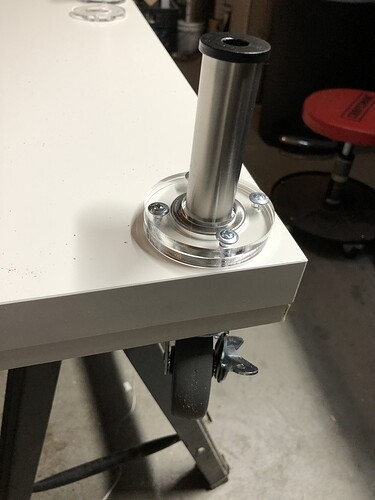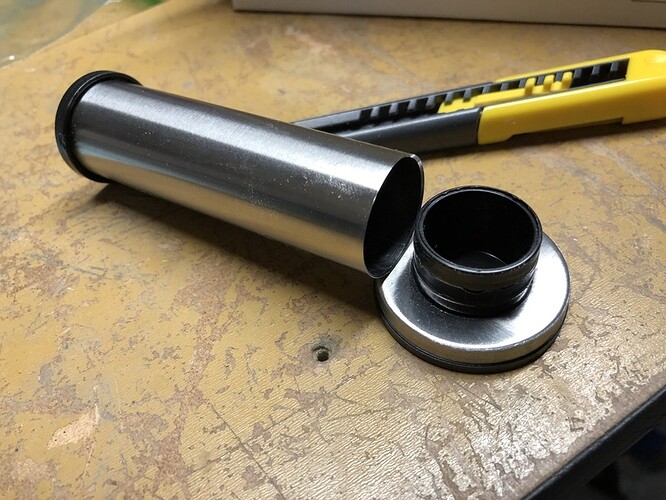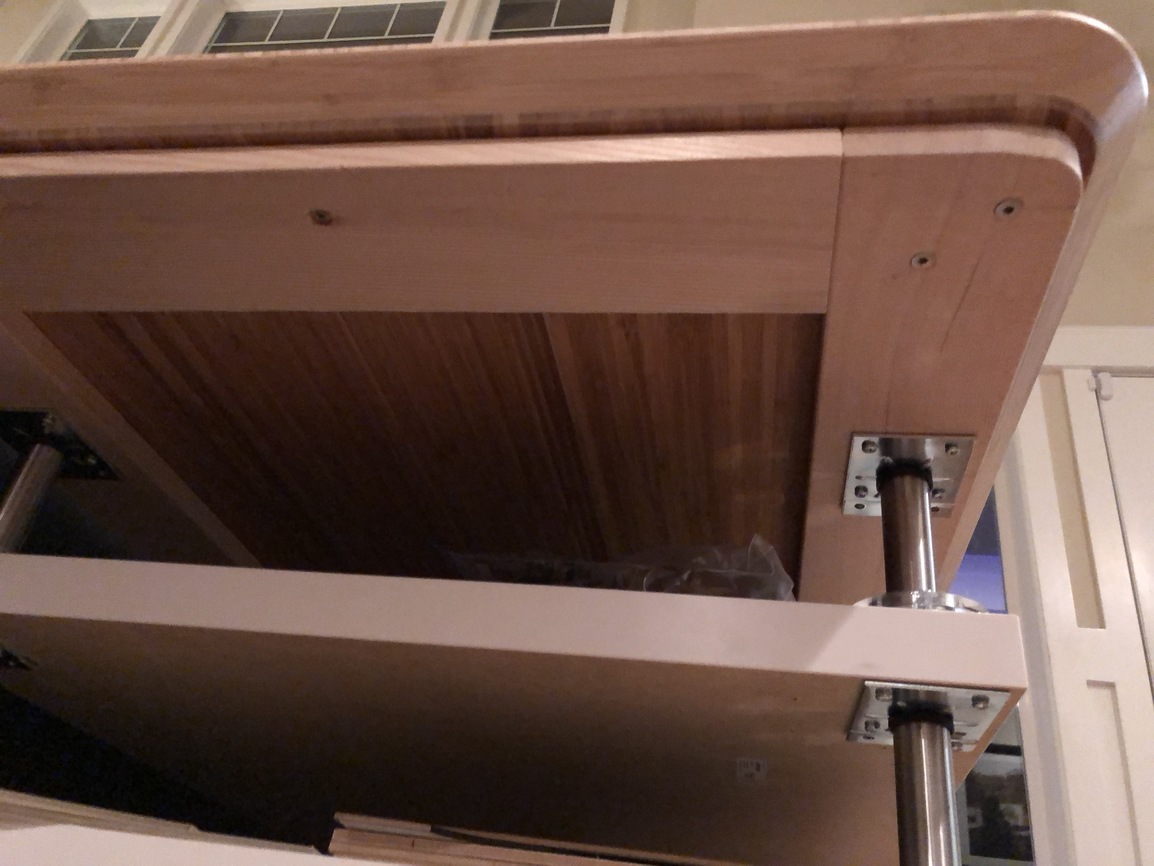If you have not yet built a table using Jonathan Fong’s design, may I make a suggestion?
The Linnmon table tops are a great choice, inexpensive and rigid. But I wonder if glue would keep the Capita legs in place if the table gets a hard bump. Further, it doesn’t appear that they leave enough space to stack Proofgrade material on the shelf, because the mounting plate means the leg will be in from the edge of the shelves. If there is at least 36" from left to right between the legs, then 3 stacks of 12" x 20" material will fit: 12 + 12 + 12. I don’t have Capita legs to check the exact measurement of the mounting plate, but it looks like it would be hard to get >36" space.
An alternative construction method is to use threaded rod. There’s a popular stereo equipment rack built this way - the Flexi. See Easy Flexy Rack for an example. 1/2" rod is likely sufficient. When deciding how far from the edge to drill the holes, make sure to account for the diameter of the washers used, to get at least 36" of side-to-side space for material. Blind holes (i.e., not all the way through) can be drilled 3/4" deep in the bottom of the Linnmon that is used for the top most shelf, and it can just be set on the top of the rods. Or epoxy nuts into the holes for greater strength.
If the bare threaded rod isn’t an appealing look, cut PVC pipe big enough to fit over it as a sleeve. There are instructions on the web for removing the printing, or painting the pipe.
Another leg option is to use PVC pipe, or metal conduit or tubing. 1" outside diameter (OD) is probably the biggest you could use while maintaining the distance between legs at >36". Get coarse thread screws that are at least 1" longer than the diameter of the legs and the distance they will be from the end of the shelf (e.g., for a 1" OD leg placed 1" in from the end of the shelf, the screw should be a minimum of 3" long). Position the shelf at the right height on the leg and drive the screws in from the end of the shelf, through the leg.
If you need more details, ask away!
I had planned to build a Flexi-style table, but decided I wanted covered storage, so will be using IKEA kitchen base cabinets with doors.



